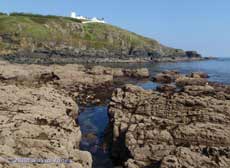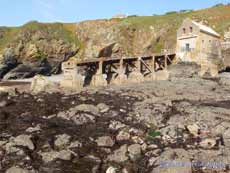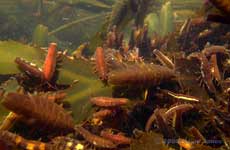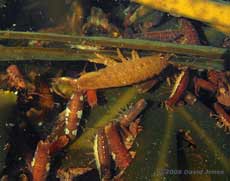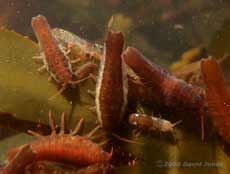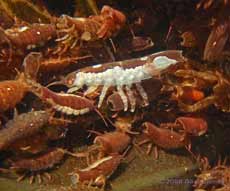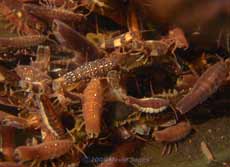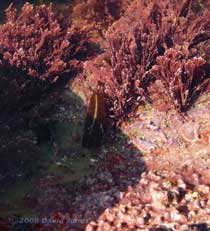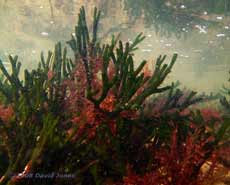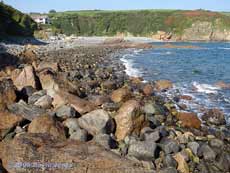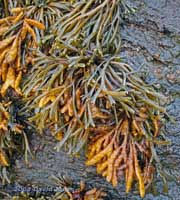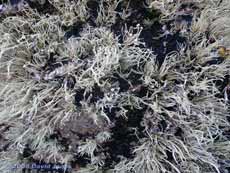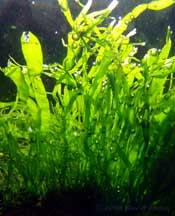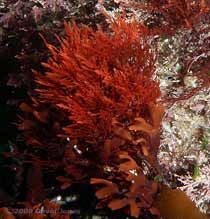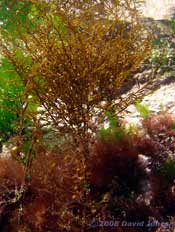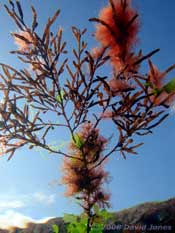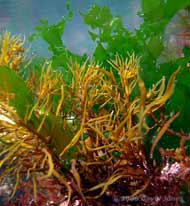Go to the last entry on this page .....Go to previous entry19 September - Our final visit to the Lizard for this year, and we seem to have brought the good weather with us - in fact, it was almost too hot to sit out in the sun for too long this afternoon! We have just spent some hours down at Lizard Point, where it was hot and somewhat hazy, there was not even the slightest breeze, and the sea was as flat as a mill-pond. We travelled down yesterday morning, with the whole journey undertaken beneath blue skies. A good journey was nearly spoilt by a technical problem at the end. Our Discovery runs on LPG and there aren't too many garages that supply it down in this part of Cornwall. Unfortunately the 'local' garage has a 'broken pump' and when we went to the nearest alternative their pump didn't want to work for us either. Fortunately, this morning we had success at a third garage a bit further away so we were able to relax and enjoy what has been a glorious day (we saw nothing like it during the summer proper).
I took advantage of a very low tide to wander about on the rocks below the head. This picture shows the buildings in front of the lighthouse and the foghorns. The light itself is not visible from that low viewpoint.
And around the other side of the headland, a view of the old lifeboat station from the low water mark.
I'm still rather weary after yesterday's journey, so I didn't spend as long as I would have liked down on the rocks, but I did stop to take some underwater photographs just next to the ruined slipway after I saw large numbers of Isopods swimming about amongst decaying seaweed.
A look through my seashore guides suggests that the species is Idotea emarginata, a common species in which the females can reach 18mm in length and the males 30mm. Is the large individual in this picture a male? It was certainly at least a couple of centimetres long.
The concave end of the abdomen is one of the characteristics of I. emarginata While the largest individuals seemed to be uniform in colour, many of the smaller ones had distinctive light or white markings, such as this one with narrow bands of white on each side,
or this one with much bolder white areas on its body, as well as white legs.
There were some with just a few small white spots on them, and a few with a speckled pattern all over the dorsal surface.
Another variation had a white stripe running along the middle of the dorsal surface. This individual was photographed from above the water surface after it had left the main group and moved into an area covered with the pink tufts of what I believe may be Corallina elongata. The pink encrustation on the rock in the foreground may be due to calcareous algae generally known as Lithothamnia.
Finally, a seaweed picture. I photographed small growths of this during the summer, near Porthallow. Here in Polpeor Cove there was rather more of it growing on rock right at the Spring low water level. The green plant is, I believe, Codium tomentosum, and has a cylindrical structure with a felt-like texture to it. I'm not going to attempt to identify the red algae tonight.
To help with the identification of seashore wildlife, I'm relying to a great extent on three books - Collins Pocket Guide to the Sea Shore of Britain & Europe (Hayward, Nelson-Smith, Shields - 1996); Hamlyn Guide to Seashores and Shallow Seas of Britain and Europe (Campbell - 1989); and British Seaweeds (Dickinson - 1963).
20 September - Another sunny day, the morning haze clearing as the day progressed, and with a steady easterly breeze. We headed for Porthallow where the breeze made the sea quite choppy, ruling out any thoughts of using the kayak today. The breeze also reminded us that it is late September by making it feel quite chilly - how different to yesterday! In this photograph the sunshine emphasises the pink colouring of some of the rocks here, although it gives little idea as to the range of rock colours and surface textures that are to be found along this foreshore. I shall have to include some pictures in a future entry.
I think it's Channelled Wrack (Pelvetia canaliculata), a species that can survive being out of the water for several days during neap tides. You can see the swollen receptacles of the plant's reproductive system.
To emphasise how close to being on 'dry land' the Channelled Wrack is, just a couple of feet away another rock is absolutely covered with a lichen which is evidently able to cope with sea spray. It may be Sea Ivory (Ramalina siliquosa) or Rocella fuciformis.
Despite the rocks, there are few rock pools here, with the loose stones extending down below the low water mark. There are a couple of tidal pools amongst the rocks that extend out just at the right of the cove itself and I did a bit of 'camera dipping'.
There is a stream running into the sea (through a culvert) just beyond those rocks, and not surprisingly in that immediate area there is a predominance of green algae in the brackish water. I think this one may be Enteromorpha linza, and although the fronds appear flat they are actually tubular, and you can see oxygen bubbles trapped within them.
In a rock pool protected from the fresh water outflow, the algae are more varied. There are red seaweeds, like the larger example in this picture, possibly Gelidium latiflorium, in which the main branches are ribbon-like with thin branchlets growing on either side. I must rty to get a closer picture of this one if the pool is uncovered on a future visit. Interestingly, I read that it is from members of this genus (Gelidiaceae) that good quality agar is produced for the culture of bacteria.
The pools also have small examples of what I think is the alien species Japweed (Sargassum muticum). These grow up like miniature trees above the rest of the algae in the pool,
and this shot, taken from below, reminds me of a real tree with clumps of mistletoe growing amongst its branches. I'm not going to try and identify the red algae that is growing in those tufts.
Another puzzle comes in the form of this very 'scruffy' brown seaweed. It's another one that I need to take a closer look at, tides permitting. Notice the battered fronds of the Sea Lettuce (Ulva lactuca) in the background.
Click on images to see larger versions |
|
